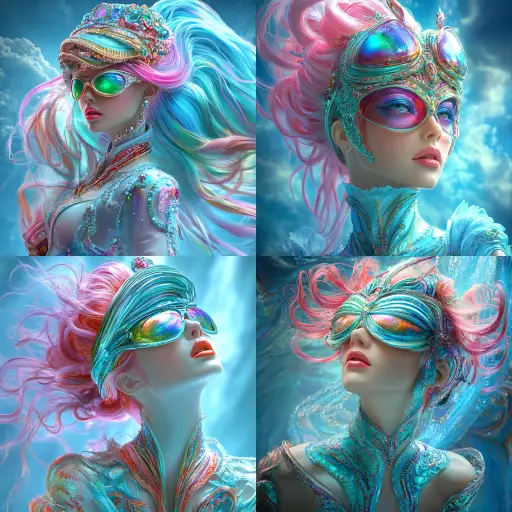Explore the Best AI Image Gallery

Beyond the Canvas: How AI-Generated Visual Content is Transforming Creativity
The art world has always been a space of innovation, constantly evolving with new tools and techniques. Today, artificial intelligence (AI) is at the forefront of this evolution, generating stunning visual content that challenges our perception of creativity itself.
From breathtaking landscapes to surreal portraits, AI algorithms are capable of producing imagery that rivals human artistry. This burgeoning field, often referred to as generative art, is poised to revolutionize various aspects of the creative industry, opening up exciting possibilities while also raising important ethical considerations.
Potential Uses: A World of Creative Possibilities
- Marketing and Advertising: AI-generated visuals can create compelling and personalized advertising campaigns, adapting to different audiences and platforms. Imagine ads that dynamically change based on user preferences or real-time data.
- Content Creation: Writers, bloggers, and social media managers can leverage AI to generate accompanying visuals for their content, saving time and resources while enhancing visual storytelling.
- Game Development: AI can assist in creating immersive game environments, generating realistic textures, characters, and objects, pushing the boundaries of virtual worlds.
- Film and Animation: From concept art to character design and even background visuals, AI can streamline the animation process, offering filmmakers a powerful tool for bringing their visions to life.
- Fashion Design: Generate innovative clothing patterns, textures, and designs, allowing fashion designers to explore new aesthetics and trends.
Ethical Considerations: Navigating Uncharted Territory
While the potential benefits of AI-generated visual content are vast, its crucial to address the ethical implications associated with this technology:
- Copyright and Ownership: Who owns the copyright to AI-generated art? Is it the creator of the algorithm, the user who provides the input, or the AI itself?
- Bias and Representation: AI algorithms are trained on massive datasets, which can inadvertently perpetuate existing biases. Its essential to ensure that AI-generated content reflects diverse perspectives and avoids harmful stereotypes.
- Job Displacement: As AI becomes more sophisticated, there are concerns about its potential impact on creative jobs. Its important to consider the societal implications and explore ways to mitigate any negative consequences.
Future Trends: The Evolution of Creative Expression
The field of AI-generated visual content is rapidly evolving, with exciting trends shaping its future:
- Personalized Art: Imagine AI algorithms generating artwork tailored to your individual preferences, tastes, and emotions.
- Interactive Art Experiences: AI can create immersive art installations that respond to user input, blurring the lines between viewer and participant.
- AI as a Creative Collaborator: Artists may increasingly use AI as a tool to enhance their creative process, exploring new ideas and pushing artistic boundaries.
The convergence of art and technology is ushering in a new era of creativity. As AI continues to evolve, we can expect even more innovative and transformative applications of AI-generated visual content, blurring the lines between human and machine artistry and redefining the very essence of creative expression.


](https://images.ai-img.art/thumbnails/150/4289d1230b86a96c4d556636c3167bed0ef38f850826549517e4e45db4d87bf7.webp)

](https://images.ai-img.art/thumbnails/150/f9584153b4cddd8c9fab611dc10247549b275c59bc173251e37d0935874f9deb.webp)





](https://images.ai-img.art/thumbnails/150/c2c9c48b38fae37f0a457b80b084ed01ba803810fc8f488c8f610c03abc74049.webp)
](https://images.ai-img.art/thumbnails/150/f67d9af3398150f2ab1bcf250717fea134275e2ca896252b54a4d9bb3719f9ac.webp)


















](https://images.ai-img.art/thumbnails/150/bddf3ae4a232290858389b933c866ad3be429ef2e25c23a9f4d7713ed6e44d0b.webp)






](https://images.ai-img.art/thumbnails/150/008b5d5d49667cc2e93a5f8a8adfaa545963da99c39ff0901f5296294636400d.webp)



